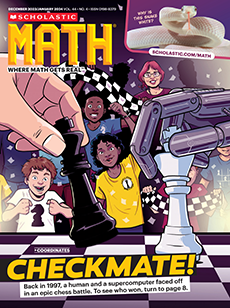Hidden in the darkness of tropical rainforests is a secret world. Those with sharp eyes might spot strange creatures in trees or by ponds, glowing orange or blue. By day, they’re ordinary-looking frogs, but they become something magical in the dim light of twilight!
Researchers recently found that many frogs biofluoresce, or glow. Biofluorescence is when animals or plants absorb high-energy light, like ultraviolet light, and reemit it as lower-energy light, like orange or green. This is different from animals that produce their own light, like fireflies. (That’s called bioluminescence.)
There’s a secret world in the tropical rainforest. You can only see it when darkness falls. Strange creatures in trees or near ponds glow orange or blue. By day, they’re ordinary-looking frogs. But they become magical after sunset!
Scientists recently discovered that many frogs have this glow. It’s called biofluorescence (bie-oh-floh-RES-uhns). It happens when animals or plants absorb high-energy light from the sun. They give it back off as visible light in colors like orange or green. (This is different from animals like fireflies. They produce their own light.)
